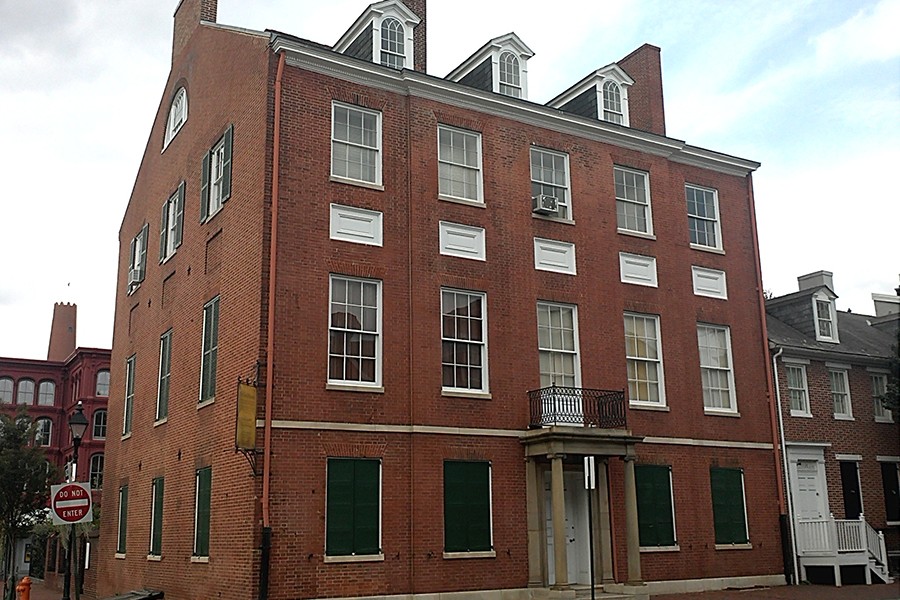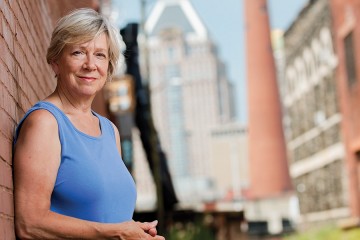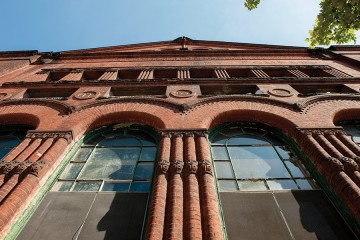Just a block away from Baltimore's Inner Harbor, the Carroll Mansion in Jonestown sits shuttered and quiet most of the time. The sparsely furnished historic home, with its mostly volunteer staff, is open to the public only on weekends.
But there's a whole team of people who envision bigger things for the early 1800s Federal-style mansion, once home to Charles Carroll, who was the last surviving signer of the Declaration of Independence and the man who gifted the 140-acre Homewood estate—now home to Johns Hopkins University's Homewood campus—to his son, Charles Carroll Jr..
"Carroll Mansion has the potential to be much more than a site where you admire period furniture and hear about a founding family," says James DeLorbe, executive director of MADE: In America, a nonprofit organization that supports American industry. "It is ideally situated on many levels to be the epicenter of modern Baltimore."
To spur that transformation, the organization is busy working this fall and winter with five local universities, including the CityLab team from the Johns Hopkins Carey Business School. Their collective efforts will be on display next spring, when Carroll Mansion becomes the "All American House", showcasing some of the nation's best manufacturers and craftsworkers—many from the greater Baltimore area. Specially selected teams of student designers are currently working with the companies to retrofit each room of the mansion with new design schemes and handmade furniture for public display. The months-long exhibit aims to boost the profile of not only the mansion but also the American companies.
At Hopkins, MBA students in the CityLab course taught by Lindsay Thompson are working on marketing and promotions for the showcase and also helping designers connect with buyers. They are also looking more broadly at the Carroll Mansion, developing a new business model to help the site expand to an array of creative new uses.
Paula Hankins, executive director of the Carroll Museums, says the mansion at 800 East Lombard St.—which has lived through through many incarnations, from saloon to school to recreation center—has the potential to be far more than an underutilized historic site. It could become "a cultural center," she says, hosting more exhibits, community events, and performances.
"That's what we're working toward with the Carey students," Hankins says. "What can this be? How would we brand ourselves and tailor our programs?"
And for Thompson and her CityLab program, the Carroll Mansion project is just "one strategy of many to rebuild the micro-economy" of the historic Jonestown neighborhood, the professor says.
Thompson, who lives in Jonestown herself, has focused for years on revitalizing and redeveloping the neighborhood, which sits in a fringe zone between the downtown district and related tourist sites and some of Baltimore's poorest neighborhoods.
Each fall her CityLab students work on partnerships, financing structures, and other projects they can use to bring entrepreneurs and developers to Jonestown.
This year, while one team works on the Carroll Mansion, another has helped unveil a "Master Plan" for the neighborhood with the Historic Jonestown Corporation, guiding developers and urban planners. By winter, there will be a pitchbook available to point investors to 57 vacant properties in Jonestown. A third team is focused more narrowly on one of those properties—the Pratt Street Carbarn—for which it's creating a mixed-use concept design.
A final team is assessing the feasibility of an urban property management company for Jonestown, which neighborhood residents would cooperatively own. Similar concepts have been tested in Cleveland and other cities, helping residents build equity.
To DeLorbe of MADE: In America, it would be fitting for Jonestown to serve as a hub for reviving Baltimore's industry and manufacturing. The Carroll Mansion project has served as a catalyst for planning a larger showcase of Baltimore's culture and design heritage. The organization is working with city agencies and affiliates to organize Baltimore's American Treasures, an event that will highlight up to 25 iconic sites throughout the city. It runs (along with the Carroll Mansion showcase) from April 23 through July 7 next year.
"Jonestown could be the place that could restart furniture manufacturing, and I can see that rapidly expanding into textiles and apparel," he says, referring to two industries that once thrived in Baltimore but all but disappeared after the 1980s.
As a city, DeLorbe says, Baltimore "can use Jonestown as a catalyst for a new way of looking at American industry."
Posted in Arts+Culture, Politics+Society, Community
Tagged community, carroll mansion, jonestown, citylab, lindsay thompson










